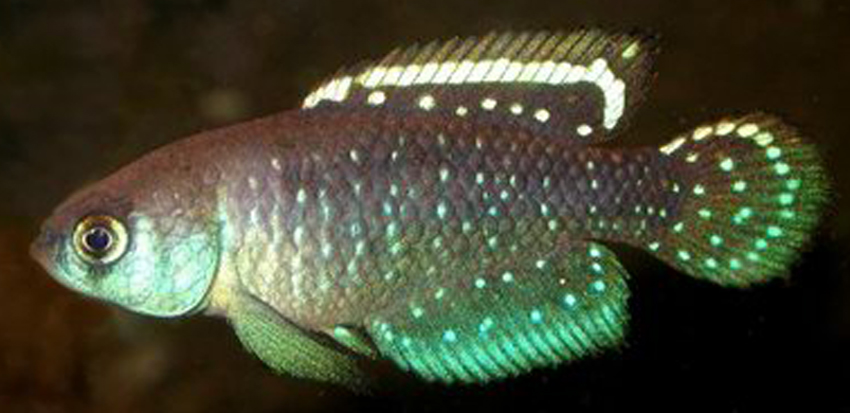new genus:
Matilebias Alonso, Terán, Serra, Calviño & Montes, 2023
new combinations from Austrolebias for Argentina:
Matilebias alexandri (Castello & Lopez, 1974)
Matilebias toba (Calvino, 2006)
new combinations from Austrolebias for Uruguay:
Matilebias affinis (Amato, 1986)
Matilebias alexandri (Castello & Lopez, 1974)
Matilebias duraznensis (García, Scvortzoff & Hernández, 1995)
Matilebias juanlangi (Costa, Cheffe, Salvia & Litz, 2006)
Matilebias periodicus (Costa, 1999)
published in:
Alonso, F., G.E. Terán, W.S. Serra Alanis, P. Calviño, M.M. Montes, I.D. García, J.A. Barneche, A. Almirón, L. Ciotek, P. Giorgis & J. Casciotta (2023):
From the mud to the tree: phylogeny of Austrolebias killifishes, new generic structure and description of a new species (Cyprinodontiformes: Rivulidae).
Zoological Journal of the Linnean Society, early view, 30 p., doi: 10.1093/zoolinnean/zlad032
abstract (from publication):
Killifishes (Cyprinodontiformes) are a group of fish that include a high proportion of small-bodied species living in seasonal aquatic habitats, with narrow geographical distributions and high human impact. They are among the most vulnerable vertebrates in the Neotropical region, with nearly half of the species in threat categories. Herein, we propose a new phylogenetic hypothesis of the Rivulidae genus Austrolebias, based on 10 genes (six nuclear and four mitochondrial) and 191 morphological characters, including 90% of the total valid species of this genus. An updated definition and diagnosis of the existing subgenera of Austrolebias is provided, and these are erected to genera. Also, four new genera are erected to accommodate the taxonomy of the group to the current phylogenetic hypothesis. Additionally, we describe Argolebias guarani sp. nov., from a seasonal pond in the Middle Parana River basin, which is diagnosed by a unique colour pattern. This addition reinforces this area as a biodiversity hotspot of endemicity and highlights the importance of this region for conservation. Data on the ontogenetic changes in colour pattern, chorion ornamentation of the egg and ecology of this species are also provided.
remarks:
Based on the below the authorship for the new genera is not to be attributed to all 11 authors of the work, but only to 5 of them: Alonso, Terán, Serra, Calviño, and Montes.
Author contributions (from the publication):
Data acquisition, writing review and editing: all authors; writing original draft preparation: Felipe Alonso; conceptualization, methodology, formal analysis and investigation: Felipe Alonso, Guillermo Terán, Wilson Serra, Pablo Calviño, Martin Montes.
ICZN – recommendation 50A:
Multiple authors. When a name is proposed in a multi-authored work, but only one (or some) of the authors is (are) directly responsible for the name and satisfying the criteria that make the name available, then the author(s) directly responsible should be identified explicitly. Co-authors of the whole work who have not had such direct responsibility for the name should not automatically be included as authors of the name.

